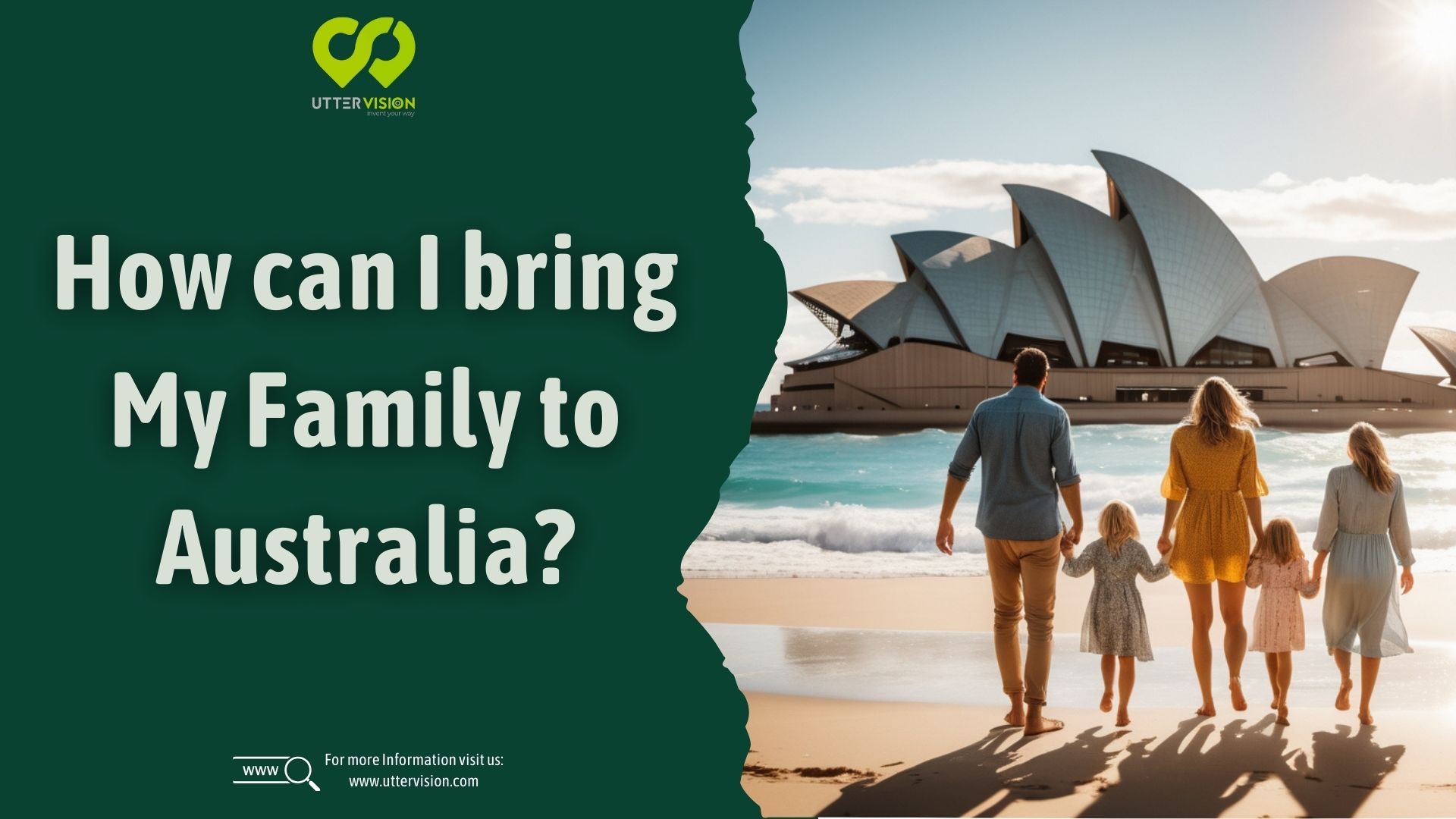
How Can I Bring My Family with Me When I Move to Australia?
In this blog, we shall be considering the various ways through which families can relocate, providing valuable insights into the most relevant types of visas, requirements, and application procedures for your relocation.
A move to Australia is a great adventure; however, one of the common questions people have when migrating into this country is how they can bring along family members. Australia has various visa options aimed at reuniting families. This paper will outline the different avenues for immigration with family and will cover the types of visas available, requirements for eligibility, and methods of application.
What Are the Main Visa Options for Bringing Family Members to Australia?
Australia provides multiple visa options for family reunification. The most common ones include:
1. Family Reunification Visas: These visas are designed for spouses, children, and dependent relatives. The main visas under this category include:
- Partner Visa Subclass 820/801 and 309/100: For spouses or de facto partners of Australian citizens, permanent residents, or eligible New Zealand citizens. This visa allows the partner to live, work, and study in Australia.
- Child Visa (Subclass 101): For children who are outside Australia and wish to join their parent who is an Australian citizen or permanent resident.
- Parent Visa (Subclass 143 and 173): Allows the reunion of parents with their offspring in Australia. The Subclass 143 is a permanent visa, while the subclass 173 is a temporary visa, which offers a pathway to permanent residency.
2. Dependent Visas: These are visas meant for dependent family members who rely on the main visa holder. The most common dependent visas are:
- Dependent Child Visa (Subclass 445): For children of temporary visa holders.
- Adult Dependent Relative Visa (Subclass 114): For adults dependent on their Australian relatives.
3. Other Family Visas: Includes visas for extended family members and those with compelling reasons. Examples are:
Remaining Relative Visa: Given to those who do not have any close family members in their home country. Subclass 115.
- Carer Visa (Subclass 116): For an applicant who needs to care for an Australian citizen or permanent resident with a medical condition.
For all information about these types of visas, visit the Australian Government Department of Home Affairs https://immi.homeaffairs.gov.au/
What Are the Prerequisites for Immigration of My Family to Australia?
An applicant seeking to bring his family to Australia must satisfy the following conditions:
-Sponsorship: You must be able to sponsor your family members, which typically involves proving your financial stability and being an Australian citizen, permanent resident, or eligible New Zealand citizen.
-Evidence of Relationship: For partner visas, the evidence of a genuine and continuous relationship must be provided. Supporting evidence may include mutual financial obligations, living arrangements, and statements from the parties involved.
-Health and Character Checks: Family members must undergo health checks and provide police certificates to prove that they meet Australia's health and character requirements.
-Financial Support: You should prove your financial ability to support your family members so they will not depend on Australian social services.
-Visa Application Specific Requirements: Every class has certain different criteria. For example, in the case of the Parent Visa, it requires the applicant to have at least one child who is an Australian citizen or an Australian permanent resident.
For detailed requirements, visit the Australian Government Immigration and Citizenship https://www.canada.ca/en/immigration-refugees-citizenship/services/visit-canada.html
How does one apply for an Australian Family Visa?
Here is a step-by-step guide to applying for a family visa:
1. Assess Eligibility: It is essential to review the particular visa category to confirm that both you and your family satisfy the eligibility requirements. Utilize the Visa Finder Tool https://immi.homeaffairs.gov.au/visas/getting-a-visa/visa-finder available on the Department of Home Affairs website to assist in identifying the appropriate visa.2. Gather Required Documents: Gather all required documents, including a proof of relationship, financial statements, and certificates of health and character, if applicable. Refer to the Document Checklist https://immi.homeaffairs.gov.au/visas/getting-a-visa/visa-application-checklists for more information.
3. Application: Fill in the correct visa application form. An application could be online through the ImmiAccount https://immi.homeaffairs.gov.au/help-support/applying-online portal or in a paper format.
4. Pay the Application Fee: The cost varies depending on the class of visa as well as the number of applicants. Payment may be done electronically during the application process.
5. Submit Your Application: Once you have completed your application, submit it online or by mailing to the applicable address if applying on paper. Make sure you have attached all the supporting documents to avoid delays.
6. Attend Interviews or Provide Biometrics: You may be called to attend an interview or provide biometric information, which includes fingerprints and photographs.
7. Wait for an Outcome: Processing times vary. Check the current processing times https://immi.homeaffairs.gov.au/visas/getting-a-visa/visa-processing-times for an estimate.
8. Get a Decision: Once your application is processed, you will get a decision. If approved, your family members will get their visas. If refused, you will be provided with reasons and how you can appeal the decision.
Recommendations for an Effective Family Visa Application
-Start Early: This means beginning the application process well in advance to allow for any potential delays and to gather all required documents.
-Provide Full and Accurate Details: Make sure that all information and documentation are correct and complete to avoid any possible delays or refusals.
-Seek Professional Assistance: Consider consulting an immigration lawyer or registered migration agent to help navigate the complex application process.
For expert guidance and in-depth information on the application procedure, log on to http://www.uttervision.com Browse our site and contact us to help you navigate immigration processes with ease.






